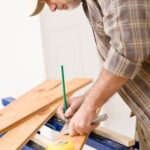In today’s world, where environmental sustainability is of utmost importance, understanding how to improve energy efficiency at home is crucial. By making simple changes and upgrades, homeowners can reduce their energy consumption, save money on utility bills, and contribute to a healthier planet.
Assessing your current energy usage is the first step in identifying areas for improvement. From upgrading to energy-efficient appliances to implementing strategies for efficient temperature control and weatherization, there are numerous ways to make a positive impact on your home’s energy consumption.
This article will provide valuable information and tips on how to improve energy efficiency at home. From choosing the right models of appliances to exploring renewable energy options and leveraging government incentives, homeowners will learn practical steps they can take to make their homes more sustainable.
Assessing Current Energy Usage
Assessing your current energy usage is the first step in improving energy efficiency at home. By identifying areas where energy is being wasted, you can take targeted action to make improvements and reduce your overall consumption. This not only benefits the environment but also saves you money on utility bills.
Conducting a Home Energy Audit
One way to assess your current energy usage is by conducting a home energy audit. This can be done by a professional or as a DIY project using online resources and guides. During an energy audit, you will assess the efficiency of your appliances, heating and cooling systems, insulation, and more. By understanding where your home is losing energy, you can prioritize upgrades and improvements.
Using Energy Monitoring Devices
Another method for assessing current energy usage is by using energy monitoring devices. These tools track your energy consumption in real-time, allowing you to pinpoint when and where energy is being used inefficiently. With this information, you can make adjustments to reduce unnecessary energy use and improve efficiency.
Seeking Professional Help
If you’re unsure of how to assess your current energy usage or identify areas for improvement, consider seeking professional help. Energy auditors or HVAC technicians can provide valuable insights into the specific needs of your home and recommend tailored solutions for improving energy efficiency. Consulting with experts in the field can help you make informed decisions about which upgrades will have the greatest impact on reducing your energy consumption.
By carefully assessing your current energy usage, whether through a home audit, monitoring devices, or professional advice, you can identify specific areas for improvement and take targeted action to increase your overall energy efficiency at home.
Upgrading to Energy-Efficient Appliances
When it comes to improving energy efficiency at home, one of the most impactful steps you can take is to upgrade to energy-efficient appliances. The right models can make a significant difference in your overall energy consumption and help lower your utility bills. Here are some tips for choosing the right energy-efficient appliances for your home:
- Look for the ENERGY STAR label: When shopping for new appliances, keep an eye out for the ENERGY STAR label. This symbol indicates that the appliance meets strict energy efficiency guidelines set by the U.S. Environmental Protection Agency and the Department of Energy.
- Consider the long-term costs: While energy-efficient appliances may have a higher upfront cost, they can lead to significant savings over time. Look beyond the sticker price and consider how much you could save on your energy bills with a more efficient model.
- Compare energy usage: When comparing different appliance models, take a close look at their energy usage. The yellow EnergyGuide label provides an estimate of how much it will cost to run the appliance each year, making it easier to compare efficiency between models.
By upgrading to energy-efficient appliances, you can reduce your household’s overall energy consumption and contribute to a greener environment. Making informed choices when selecting new appliances can lead to long-term savings and a more sustainable lifestyle.
Remember that upgrading to energy-efficient models is not only beneficial for your wallet; it also has a positive impact on the environment by reducing greenhouse gas emissions and conserving natural resources. Taking this step towards reducing your carbon footprint while saving money in the long run is a win-win situation.
Taking these tips into consideration when choosing new appliances will not only help improve your home’s overall energy efficiency but also contribute towards building a more sustainable future.
Heating and Cooling
Invest in Energy-Efficient HVAC Systems
One of the most effective ways to improve energy efficiency in heating and cooling is by investing in energy-efficient HVAC systems. When considering a new furnace or air conditioner, look for models with high Seasonal Energy Efficiency Ratio (SEER) ratings for air conditioners and Annual Fuel Utilization Efficiency (AFUE) ratings for furnaces. Additionally, consider installing a programmable thermostat to regulate the temperature based on your schedule, reducing unnecessary energy consumption.
Maintain and Service Heating and Cooling Systems
Regular maintenance of heating and cooling systems is essential for ensuring optimal performance and energy efficiency. Clean or replace air filters regularly, as dirty filters can restrict airflow and cause the system to work harder, increasing energy usage. Schedule annual professional maintenance to inspect and tune up the systems, which can help identify any inefficiencies or potential issues that could affect energy efficiency.
Implement Passive Cooling Techniques
In addition to upgrading HVAC systems, homeowners can also implement passive cooling techniques to reduce the need for mechanical cooling. This includes ensuring proper ventilation, using ceiling fans to create airflow, shading windows from direct sunlight with curtains or blinds, and minimizing heat-generating activities during the hottest part of the day. These simple strategies can help maintain comfortable indoor temperatures without relying solely on air conditioning, ultimately improving energy efficiency at home.
By focusing on efficient temperature control through these strategies, homeowners can make significant strides in improving energy efficiency at home while also creating a more comfortable living environment.
Insulation and Weatherization
- Seal air leaks: One of the most effective ways to prevent energy loss is by sealing any air leaks in your home. Common areas for air leaks include windows, doors, electrical outlets, and gaps around plumbing fixtures. Use caulk or weather-stripping to seal these areas and minimize air infiltration.
- Upgrade insulation: Insufficient insulation in the attic, walls, and floors can lead to significant heat loss in the winter and heat gain in the summer. Consider upgrading your insulation to reduce energy waste and improve comfort levels. Choose insulation materials with high R-values for maximum effectiveness.
- Invest in energy-efficient windows and doors: Windows and doors are notorious for allowing heat transfer due to poor insulation. Replace old, drafty windows with energy-efficient models that have multiple panes, low-E coatings, and insulated frames to minimize heat loss.
By taking these steps to improve insulation and weatherization in your home, you can effectively reduce energy loss, lower utility bills, and create a more comfortable living environment while also reducing your environmental footprint.
Lighting
Switching to LED and other energy-efficient lighting options can significantly contribute to improving energy efficiency at home. According to the U.S. Department of Energy, lighting accounts for about 10% of a typical household’s electricity use. By making the switch to LED bulbs, homeowners can reduce their energy consumption for lighting by up to 75%. This not only saves money on utility bills but also reduces the environmental impact of energy usage.
When considering how to improve energy efficiency at home through lighting, it is important to assess the type of lighting fixtures and bulbs currently in use. Incandescent and halogen bulbs are not as efficient as LED or CFL (compact fluorescent light) bulbs.
In fact, a traditional incandescent bulb only converts about 10% of its energy into light, while the rest is wasted as heat. On the other hand, LED bulbs convert about 90% of their energy into light, making them a much more efficient option.
In addition to switching to LED bulbs, homeowners can also consider investing in smart lighting systems that allow for greater control over when and how lights are used. Timers, motion sensors, and dimmer switches can all help optimize energy usage by ensuring that lights are only on when needed. Making these simple changes in lighting can make a big difference in reducing overall energy consumption at home.
| Energy Efficiency Measure | Percentage Reduction in Energy Usage |
|---|---|
| Switching from incandescent to LED bulbs | Up to 75% |
| Installing smart lighting controls | Potential for significant reduction based on usage patterns |
Smart Home Technology
In today’s digital age, smart home technology has become increasingly popular as a way to improve energy efficiency at home. From smart thermostats to automated lighting systems, the use of technology can help homeowners reduce their energy consumption and lower their utility bills.
One of the key ways in which smart home technology can improve energy efficiency is through automation. By using programmable thermostats, homeowners can set their heating and cooling systems to operate at optimal levels based on their daily schedule. This means that energy is not wasted on heating or cooling an empty home, resulting in significant energy savings over time. Additionally, automated lighting systems can be programmed to turn lights on and off based on occupancy, further reducing electricity usage.
Another benefit of smart home technology is the ability to monitor and control energy usage remotely. Many smart devices allow homeowners to track their energy consumption in real-time and make adjustments from anywhere using a smartphone or tablet. This level of control empowers individuals to make more informed decisions about how they use energy in their homes, ultimately leading to greater efficiency.
Furthermore, the integration of renewable energy sources such as solar panels or wind turbines with smart home technology can enhance overall energy efficiency. By automating the use of renewable energy based on factors such as weather conditions and time of day, homeowners can maximize the benefits of these clean energy sources while minimizing reliance on traditional grid power. As technology continues to advance, the potential for smart home automation to further enhance energy efficiency is expected to grow even further.
Renewable Energy Options
As more homeowners become conscious of their energy consumption, exploring renewable energy options such as solar and wind power is becoming increasingly popular. By harnessing natural resources, households can significantly reduce their carbon footprint and energy costs. In this section, we will discuss how to incorporate solar and wind power into your home to improve energy efficiency.
Solar power is one of the most accessible forms of renewable energy for homeowners. Installing solar panels on your roof can provide a portion or even all of your home’s electricity needs, depending on the size of the system. Additionally, there are now options for solar shingles that blend seamlessly into the roof, providing an aesthetically pleasing alternative to traditional panels.
When it comes to wind power, smaller wind turbines designed for residential use are available for those in areas with sufficient wind resources. These turbines can be mounted on rooftops or stand-alone towers in yards. However, it’s essential to conduct a thorough assessment of your property’s wind potential before investing in a residential wind turbine.
Incorporating renewable energy sources like solar and wind power into your home can be a substantial long-term investment that pays off through reduced utility bills and environmental impact. But before making any decisions, it’s crucial to consider factors such as your location, property size, and local regulations regarding renewable energy installations.
| Renewable Energy Options | Solar Power | Wind Power |
|---|---|---|
| Accessibility | Highly accessible with options for traditional panels or solar shingles. | Suitability depends on the location’s wind potential and local regulations. |
| Installation | Requires roof space or yard area with proper sun exposure. | Maintenance-free systems require regular inspection and upkeep. Larger setups may require professional installation. |
Government Incentives and Rebates
One of the most effective ways to improve energy efficiency at home is by taking advantage of government incentives and rebates. Many local, state, and federal governments offer financial assistance to homeowners who are looking to upgrade their homes with energy-efficient measures. These incentives can help offset the initial investment of energy-efficient upgrades, making it more accessible for homeowners to make these changes.
There are a variety of government programs that offer incentives and rebates for energy efficiency upgrades, including tax credits, grants, and low-interest loans. These programs may cover a range of upgrades, from installing solar panels or geothermal heat pumps to upgrading insulation and windows. Homeowners can visit their local government websites or speak with a representative to learn about the specific programs available in their area.
In addition to government incentives, there are also utility rebates that homeowners can take advantage of. Many utility companies offer rebates for installing energy-efficient appliances, HVAC systems, and lighting. Some utilities even offer free or discounted energy audits to help homeowners identify areas for improvement. By leveraging these financial resources, homeowners can make significant strides in improving the energy efficiency of their homes while saving money in the long run.
Conclusion
In conclusion, improving energy efficiency at home is not only beneficial for reducing utility bills but also for reducing environmental impact. By understanding the importance of energy efficiency and assessing current energy usage, homeowners can identify areas for improvement and make informed decisions about upgrades. Upgrading to energy-efficient appliances, implementing efficient temperature control strategies, and investing in insulation and weatherization are just a few ways to decrease energy consumption.
Switching to LED lighting and utilizing smart home technology can further optimize energy use, while exploring renewable energy options such as solar and wind power can provide long-term sustainability benefits. Additionally, homeowners should take advantage of government incentives and rebates to offset the cost of energy efficiency upgrades.
Overall, taking action to improve energy efficiency at home not only benefits the environment but also results in cost savings for the homeowner. By making conscious choices about energy use and leveraging available resources, individuals can contribute to a more sustainable future while enjoying the comfort of an efficient living space.
Frequently Asked Questions
What Are 3 Ways We Could Increase Energy Efficiency?
One way to increase energy efficiency is by using energy-efficient appliances and lighting. Another way is to improve insulation in the home to prevent heat loss. Additionally, incorporating renewable energy sources such as solar panels can also boost energy efficiency.
Can I Make My Home More Energy Efficient?
Yes, you can make your home more energy efficient by sealing air leaks, installing a programmable thermostat, using energy-efficient light bulbs, upgrading to Energy Star-rated appliances, and improving insulation in the attic and walls.
What Are 5 Ways to Improve Energy Efficiency in Existing Buildings?
There are several ways to improve energy efficiency in existing buildings. These include conducting an energy audit to identify areas for improvement, upgrading HVAC systems for better efficiency, implementing smart building technologies for monitoring and control, retrofitting with energy-efficient lighting and windows, and educating occupants on best practices for saving energy.

I’m thrilled to have you here as a part of the Remodeling Top community. This is where my journey as an architect and remodeling enthusiast intersects with your passion for transforming houses into dream homes.





